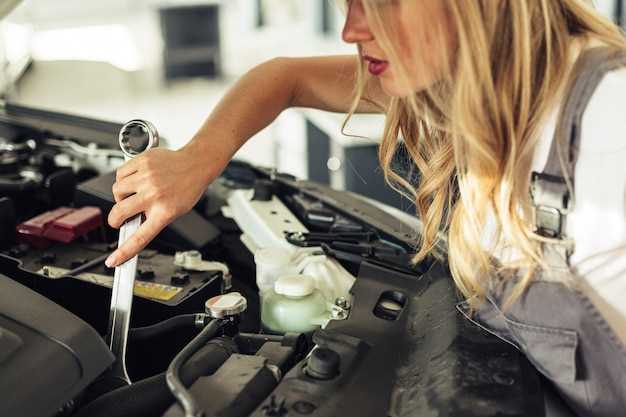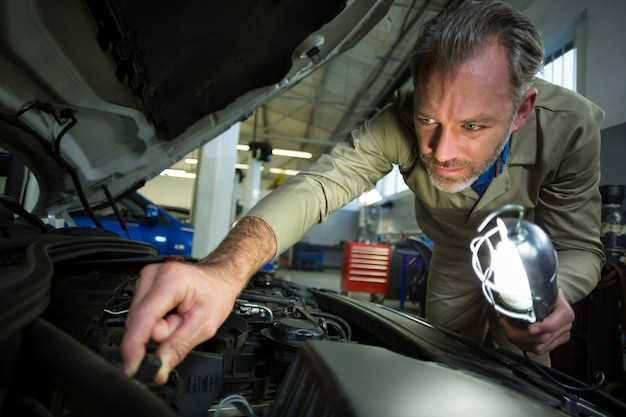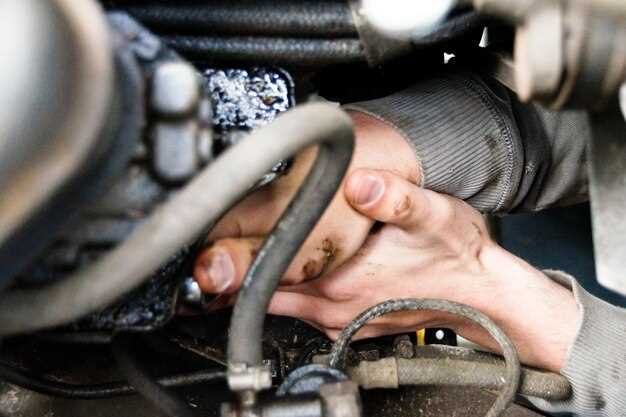How to fix slow engine cranking

Experiencing slow engine cranking can be a frustrating and concerning issue for any vehicle owner. When you turn the key in the ignition and the engine hesitates to start, it often points to underlying problems with the battery or the motor itself. Understanding these components and their interactions is crucial for diagnosing and resolving the issue effectively.
A weak or failing battery is one of the most common culprits behind slow cranking. Over time, batteries can lose their charge capacity due to age, weather conditions, or improper maintenance. This reduced power output may not provide sufficient voltage to efficiently start the engine. In some cases, a simple jump start may suffice; however, if the battery is significantly degraded, replacement may be necessary.
On the other hand, the motor, specifically the starter motor, plays a pivotal role in the engine cranking process. If the starter is malfunctioning, it may not engage properly, leading to a sluggish response when attempting to start the vehicle. Regular inspection and maintenance of the starter motor and its connections can help to prevent these issues from arising, ensuring reliable performance when you need it most.
Identifying Battery Problems and Testing Techniques

Slow engine cranking can often be traced back to battery-related issues. The battery serves as the vital power source for the starter motor, and any weakness in this component can lead to difficulties in starting the engine. Therefore, identifying battery problems is crucial for efficient vehicle operation.
Check Battery Voltage: The first step in diagnosing battery issues is to measure the voltage. A healthy, fully charged battery should read around 12.6 volts or more when the engine is off. A voltage reading below 12.4 volts indicates a partially discharged battery, while a reading below 12.0 volts suggests significant problems and may require replacement.
Load Testing: After checking the voltage, performing a load test can provide further insight. This technique involves applying a load that simulates engine cranking for a brief period. A good battery should maintain at least 9.6 volts under load conditions. If the voltage drops significantly, the battery may be failing and should be evaluated for replacement.
Visual Inspection: Conducting a visual inspection can reveal physical signs of battery issues. Look for corrosion on terminals, which can hinder electrical flow, and ensure all connections are secure. Cracks or swelling in the battery casing may also indicate internal damage.
Check for Parasitic Draw: Another aspect to consider is parasitic draw, where electrical components drain the battery while the vehicle is off. This can lead to a drained battery and subsequent slow cranking. It’s essential to check for any components that remain powered when the vehicle is turned off.
Battery Age and Maintenance: Finally, consider the age of the battery. Most batteries have a lifespan of around 3-5 years. Regular maintenance, such as cleaning terminals and ensuring proper fluid levels in lead-acid batteries, can extend battery life and performance.
By implementing these identification and testing techniques, vehicle owners can effectively address battery problems that lead to slow engine cranking issues.
Diagnosing Starter Motor Failures and Signs

When facing slow engine cranking issues, one of the primary components to examine is the starter motor. A malfunctioning starter motor can lead to insufficient power being delivered to the engine, impeding its ability to start. Recognizing the signs of starter motor failures is crucial for timely diagnosis and repair.
Common Symptoms of Starter Motor Issues
There are several indicators that the starter motor may be at fault. A frequent sign is a noticeable clicking sound when attempting to start the engine. This noise typically suggests that the motor is trying to engage but is not receiving enough power, often linked to other components like the battery.
Another symptom is slow cranking of the engine. If the engine struggles to turn over, this can indicate that the starter motor is not functioning efficiently. This can result from internal damage or wear within the motor itself.
Electrical System Check
Before concluding that the starter motor is the source of the problem, it is essential to examine the battery. A weak or discharged battery can mimic starter motor failure symptoms. Testing the battery’s voltage and ensuring that it is adequately charged can help eliminate this variable. A fully charged battery should read approximately 12.6 volts or higher.
If the battery is in good condition, further investigation into the starter motor is warranted. This includes checking the electrical connections for any signs of corrosion or loose wires that could affect power delivery.
Starter Motor Testing
To diagnose the starter motor itself, a bench test can be performed. This involves removing the motor and applying direct power to it to see if it operates as expected. A functional starter motor should spin freely and consistently when power is applied.
In summary, diagnosing starter motor failures involves recognizing key symptoms, including unusual noises and slow cranking. A methodical check of the battery and electrical connections is vital, followed by a direct test of the starter motor to confirm its operational status.
Preventative Maintenance Tips for Long-Lasting Performance
Maintaining your vehicle’s starter motor is crucial for ensuring reliable performance and avoiding slow engine cranking issues. Regular preventative maintenance can extend the lifespan of your starter and enhance overall engine functionality. Here are several practical tips:
1. Regular Battery Checks: The battery is the primary power source for the starter motor. Ensure that the battery is in good condition by checking its voltage and connections frequently. Clean any corrosion from terminals and cables to maintain a solid electrical connection.
2. Inspect Starter Connections: Loose or corroded connections can impede the starter’s operation. Periodically inspect the wiring and connections to the starter motor, tightening any loose bolts and cleaning contact points as needed.
3. Monitor Engine Fluid Levels: Low oil or coolant levels can lead to increased strain on the starter motor. Regularly check and top off engine fluids to ensure the motor operates smoothly without additional stress.
4. Schedule Routine Maintenance: Include starter motor inspection in your vehicle’s routine maintenance schedule. Mechanics can check the health of the starter, ensuring it performs optimally when needed.
5. Avoid Short Trips: Frequent short trips can prevent your battery from fully charging and put additional strain on the starter motor. Aim for longer drives when possible to keep the battery charged and in good health.
6. Listen for Unusual Sounds: Be attentive to any unusual sounds when starting your engine. Grinding or clicking noises may indicate starter issues that need prompt attention.
7. Keep your Vehicle Clean: Dirt and debris can affect various components, including the starter motor. Regular cleaning of the engine compartment can help maintain the integrity and longevity of the starter system.
By implementing these preventative maintenance tips, you can enhance the lifespan of your starter motor and keep your vehicle operating efficiently. Maintaining good practices can save you from unnecessary repairs and ensure your engine starts reliably every time.




